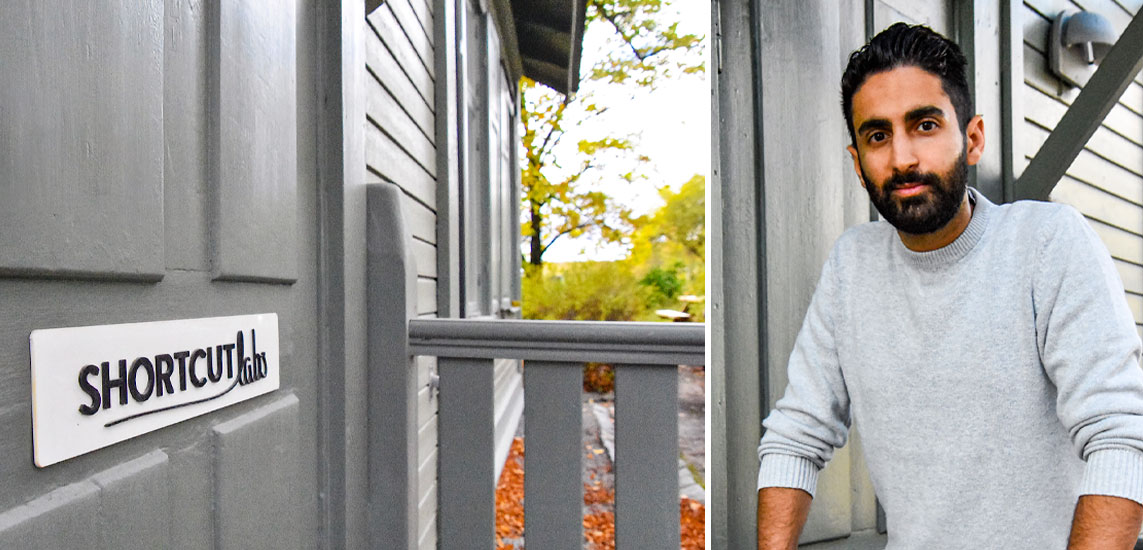
Snellere productie, kortere doorlooptijden en meer flexibiliteit waren enkele voordelen voor Shortcut Labs toen ze voor printen met de Mimaki UJF-3042MkII kozen. “Ik wou dat we het eerder hadden ontdekt,” zegt mede-oprichter Amir Sharifat.
Het was bijna toevallig dat drie jonge Zweedse technologiestudenten elkaar in 2013 ontmoetten en samen Flic ontwikkelden, de eerste Smart Bluetooth Button op de markt. In het tijdperk van het Internet of Things, toen de interesse in thuisautomatisering begon te groeien, werd Flic al snel een multi-miljoen dollar bedrijf met partners en productiesites over de hele wereld. Met een korte klik, dubbelklik of de knop ingedrukt houden, zouden consumenten en bedrijven in meer dan 110 landen hun verlichting of muziek kunnen bedienen, een taxi bellen, roomservice bestellen of hulp vragen, en dat allemaal met een simpele klik op de knop.
Naarmate het bedrijf groeide, vroegen praktische problemen in de productie om nieuwe oplossingen. Een van de meest urgente was het vinden van een efficiënte en betrouwbare printoplossing voor het groeiende aantal individuele klanten die een print op maat wilden, en zakelijke klanten die hun eigen merk op de plastic knoppen wilden laten printen. “De Flic-knoppen worden in Maleisië geproduceerd, waardoor we voor de printservices van een zeefdrukkerij in Maleisië kozen. Het duurde een aantal weken en soms maanden voordat we een acceptabel logo met de juiste kleuren kregen, waarbij we de samples meerdere keren heen en weer moesten sturen. Met het toenemende aantal zakelijke klanten waren die doorlooptijden niet meer acceptabel,” zegt Amir Sharifat.
De wens om het drukwerk in-house te gaan doen, begon te groeien, en tijdens een printing-evenement in Stockholm in 2016 ontmoette Sharifat Signcom, de Zweedse reseller van Mimaki, om over UV-printen te praten. “Ik had over Mimaki gelezen en wist dat het een van de grootste drukwerkleveranciers op de markt is. We maakten kennis met de Mimaki UJF-3042MkII, vier kleuren plus wit en vernis, 1200 x 1200 dpi, die aan onze behoeften voldeed. UV is essentieel, omdat de bedrukking van onze producten krasbestendig moet zijn. We hebben berekend dat het drukken van meer dan 2.000 knoppen in één jaar tijd rendabel zou zijn. We hebben voor de lease-optie gekozen van één Mimaki UJF-3042MkII,” zegt Sharifat, waarbij hij het belang van flexibiliteit benadrukt in een continu veranderende toekomst.
Na een succesvolle installatie zijn de technici en IT-experts in het Shortcut Labs team geleidelijk aan allemaal printexperts geworden. “We maakten ons in het begin een beetje zorgen – is het moeilijk om te leren printen? Hoeveel dagelijks onderhoud heeft de nieuwe printer nodig? We wilden vooral een nuttig hulpmiddel hebben, zonder ons te veel op de machine zelf te hoeven richten. Onder begeleiding van Signcom heb ik geleerd hoe ik de printer moet gebruiken en nu is iedereen in het bedrijf betrokken bij de printopdrachten,” legt Sharifat uit, terwijl hij in een hoek van zijn kantoor de Mimaki UJF-3042MkII met 32 x 42 cm printoppervlak demonstreert.
Vandaag de dag draait de Mimaki UJF-3042MkII minstens twee keer per week. Er passen 80 Flic-knoppen in één printoplage, die 7 tot 15 minuten in beslag neemt, afhankelijk van de resolutie en de vernis. Om de knoppen tijdens het drukproces op hun plaats te houden, heeft Shortcut Labs een aangepaste mal ontwikkeld die in de machine past. Het enige dagelijks onderhoud waar het personeel mee te maken heeft, is het na het printen reinigen van de drie printkoppen en het afdekstation. “De bediening van de Mimaki UJF-3042MkII is eenvoudig en de printkwaliteit is onberispelijk. De producten komen droog uit de printer en zijn direct klaar om te worden verzonden dankzij de sneldrogende flexibele UV-LED-inkt die Signcom ons heeft geleverd,” aldus Sharifat. Hij benadrukt dat het drukken in eigen huis heeft bijgedragen aan een betere service en nieuwe zakelijke mogelijkheden voor zowel Shortcut Labs als hun klanten. “We zijn nu beter in staat om kleinere orders af te handelen en de efficiëntie in de logistiek is aanzienlijk verbeterd. Het is zeer winstgevend geweest en we betreuren het dat we deze beslissing niet een jaar eerder hebben genomen. Als dat zo was geweest, zouden we misschien alweer een jaar verder zijn geweest in onze ontwikkeling als bedrijf.”






